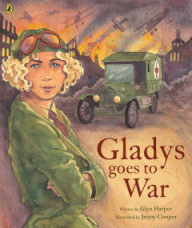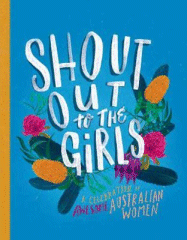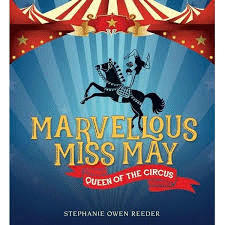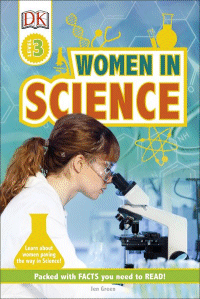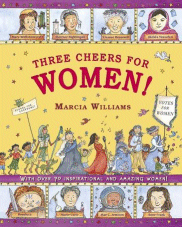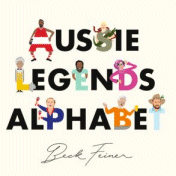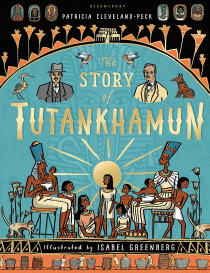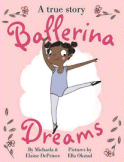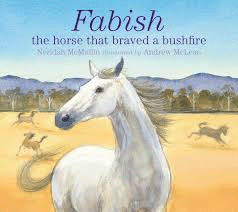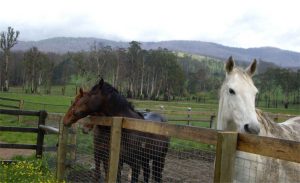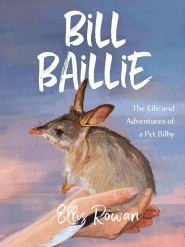
Bill Baillie
Bill Baillie – The Life and Adventures of a Pet Bilby
Ellis Rowan
NLA Publishing, 2018
104pp., hbk., RRP $A24.99
9780642279200
In the harsh, hot Western Australian desert, several hundred miles inland from Perth lies the town of Goongarrie, where, at the turn of last century, Tabitha, a painter, came to paint the wonders of the landscape and its inhabitants. Despite its remoteness there were people there and each day they brought her “curious plants and queer beasts” to examine and paint.
Among those “queer beasts” was a little creature – naked, five inches (12.5 cm) long at most, long legs with a strange eyelet mouth that had been attached to a teat in its mother’s pouch before she was killed in the sharp teeth of a deadly trap. Looking like he had given up and decided to die, it felt the warm, comforting hands of Tabitha around him and in that moment both were determined that he would live. Bill Baillie’s life and adventures with this itinerant painter had begun!
And what a life it was – becoming famous and known as ‘Master Bill Baillie of Goongarrie” he travelled everywhere with Tabitha for the rest of his life, his energy unbounded, his curiosity unsated, especially at night time which was his day, and his love for her unequalled. Getting into precarious situations, dodging a host of bilby enemies who wanted to eat him and travelling on trains and boats and wagons from Perth to Melbourne, Bill Baillie was Tabitha’s constant companion until his inevitable, sad death in her arms just two years later.
“Tabitha’ is actually Ellis Rowan herself who was determined “to find and paint every wildflower on the continent”, and she initially wrote this story in 1908 at a time when having a native creature for a pet was considered a curiosity rather than a concern. Using remarkable skill that keeps the reader intrigued and wanting to know more about these almost mythical creatures, Stephanie Owen Reeder has abridged the original using more accessible vocabulary and shorter chapters while omitting none of the drama of this curious relationship. Rowan’s descriptions of the environment as viewed through the eyes of a painter are exquisite and the reader is transported to that vast lonely landscape with its brilliant colours and on-the-surface desolation brought to life. Many of the original illustrations by Rowan and Hans Praetorius have been left in while others from the NLA’s collection of bilby paintings have also been included.
As is usual with NLA publications, the story is complemented by several pages of further information, all based on the library’s relevant collections including the Rowan collection itself.
Bilbies are an endearing but endangered species brought to our attention as the Australian symbol of Easter to raise awareness of the damage done to the environment by the introduced wild rabbits so the release of the charming story is fitting, with Easter on the horizon.
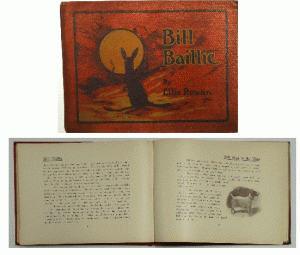
Images from the original held by National Centre for Australian Children’s Literature Inc
